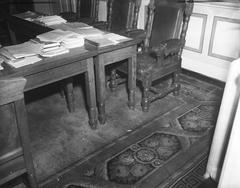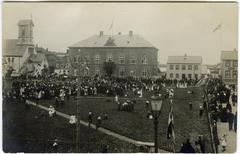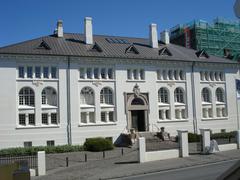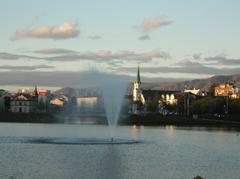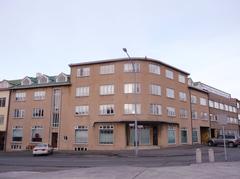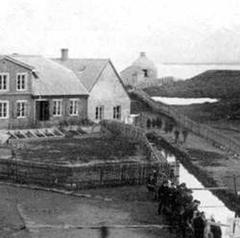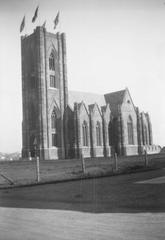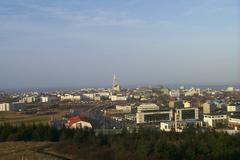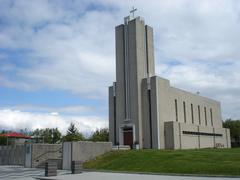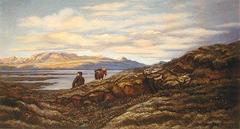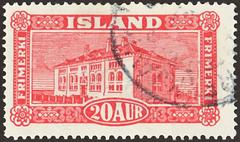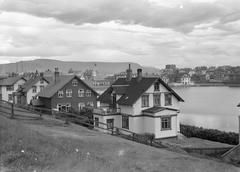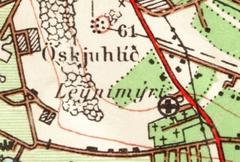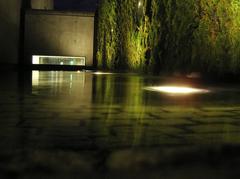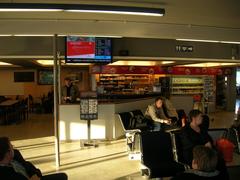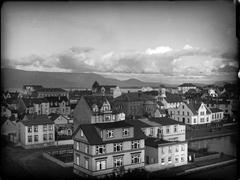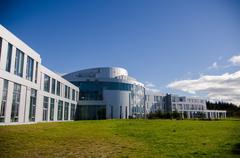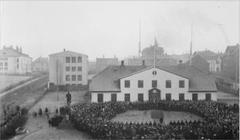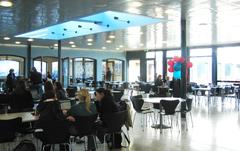Living Art Museum Reykjavik: Visiting Hours, Tickets, and Complete Guide
Date: 04/07/2025
Introduction
The Living Art Museum (Nýlistasafnið, or Nýló) in Reykjavík is Iceland’s foremost artist-run institution for contemporary and experimental art. Founded by a group of visionary artists in 1978, Nýló has become an anchor for creative innovation and dialogue in Iceland, offering a dynamic collection, cutting-edge exhibitions, and a vital platform for artistic experimentation. Housed in the historic Marshall House in Reykjavík’s harbor district, the museum welcomes visitors seeking to explore Iceland’s vibrant art scene and cultural heritage. This guide covers everything you need to know: history, collection highlights, visiting hours, tickets, accessibility, and nearby attractions. For current details, always consult the official Living Art Museum website and relevant cultural sources (Visit Iceland; Icelandic Art Center).
Table of Contents
- Introduction
- Historical Overview
- Visiting Information
- Collection Highlights & Exhibitions
- Visitor Experience: Facilities and Tips
- FAQ
- Conclusion
- References
Historical Overview
Founding and Early Years (1978–1980s)
Nýló was established in 1978 by 27 artists, many associated with the SÚM movement and the Icelandic Art Academy. Their aim was to provide a venue for contemporary and experimental art often marginalized by mainstream institutions. The first home was a modest rented space at Mjölnisholt 14, where the practice of building a collection through artist donations was established. This collaborative foundation continues to shape the museum’s ethos (Visit Iceland; Icelandic Art Center).
Growth and Institutionalization (1980s–1990s)
By 1981, Nýló expanded with a dedicated gallery, becoming a central venue for performance and avant-garde art in Iceland. It moved several times, including to Vatnsstígur and Laugavegur, adapting to the evolving needs of a growing collection and community (Wikipedia).
Collection and Archives
The museum’s collection, now exceeding 2,300 works, features a wide range of media: painting, sculpture, video, sound, photography, and conceptual art. Notable artists include Joseph Beuys, Dieter Roth, Matthew Barney, Ragnar Kjartansson, Erró, Hreinn Friðfinnsson, and Rúrí. The Nýló archive is a vital resource documenting over 100 artist-run spaces, performance events, and Icelandic art history, and is accessible to researchers and the public (Nýló Collection).
The Marshall House Era (2014–Present)
After temporary locations, Nýló moved in 2017 to the second floor of the Marshall House (Marshallhúsið), a renovated herring factory in Reykjavík’s Grandi harbor district. This location—shared with other leading art spaces—offers expanded exhibition facilities and increased visibility within the city’s thriving cultural quarter (Icelandic Art Center; Wikipedia).
Visiting Information
Hours
- General Opening: Wednesday to Sunday: 12:00 PM – 6:00 PM
- Closed: Mondays and Thursdays
Hours may vary during holidays and special events. Always check the official website for updates.
Tickets and Admission
- Standard Admission: Modest fee (typically 20–60 USD, with discounts for students and seniors)
- Free Admission: Occasionally available for certain exhibitions or on select days
- Purchase: At the entrance or online via the official Nylo website
Accessibility
- Wheelchair-accessible entrances and galleries
- Accessible restrooms
- Staff available for assistance; contact in advance for specific needs
Getting There and Parking
- Address: Grandagarður 20, 101 Reykjavík, Iceland
- By Foot: 20–25 minute walk from city center along the harbor
- By Bus: Lines 14 and 3 stop at “Grandi”
- Parking: Free parking available beside Marshall House; additional street parking nearby
Nearby Attractions
- Reykjavík Maritime Museum
- The Saga Museum
- Kling & Bang Gallery and Studio Ólafur Elíasson (in the same building)
- Cafes, restaurants, and shops in the Grandi district
- Harpa Concert Hall and Sun Voyager sculpture within walking distance
Events and Tours
- Artist talks, curator-led tours, and workshops held regularly
- Guided tours available for groups and schools (advance booking recommended)
- Family-friendly workshops and educational activities throughout the year
Collection Highlights & Exhibitions
Nýló is renowned for its rotating program of exhibitions, emphasizing new and experimental work across media. There is no permanent display; instead, curated shows change several times a year, featuring Icelandic and international artists. Collection highlights include:
- Erró: Pop-art collages and narrative paintings
- Hreinn Friðfinnsson: Conceptual installations and photography
- Rúrí: Environmental and performance art
- Magnús Pálsson: Experimental sound works and sculpture
The museum also hosts:
- Multimedia installations exploring technology, sound, and visual art
- Performance art events engaging visitors directly
- Archival exhibitions providing historical context for Icelandic contemporary art (Guide to Iceland)
For a preview, explore the museum’s virtual tour and image gallery.
Visitor Experience: Facilities and Tips
- Gallery Spaces: Modern, light-filled exhibition areas on multiple levels
- Museum Shop: Books, prints, and unique gifts related to Icelandic art
- Café: Refreshments and views of the Grandi district
- Family-Friendly: Many exhibitions and workshops suitable for children; check event listings
- Photography: Permitted in most areas (no flash or tripods); always confirm with staff or signage
- Languages: Information provided in Icelandic and English
Visitor Tips:
- Exhibition schedules change frequently; plan ahead.
- Early afternoons are typically less crowded.
- Combine your visit with nearby museums and harbor walks for a full cultural experience.
Frequently Asked Questions (FAQ)
Q: What are the museum’s visiting hours?
A: Wednesday to Sunday, 12:00 PM – 6:00 PM. Closed Mondays and Thursdays.
Q: How much are tickets?
A: Standard admission is modest (usually 20–60 USD, with discounts available); some events are free.
Q: Where is Nýló located?
A: Grandagarður 20, Marshall House, Grandi district, Reykjavík.
Q: Is the museum accessible for wheelchair users?
A: Yes, all facilities are accessible.
Q: Are guided tours available?
A: Yes, for groups and individuals by appointment. Regular artist talks and tours are also scheduled.
Q: Can I take photos inside?
A: Yes, in most areas, but restrictions may apply during performances or specific exhibitions.
Q: Is the museum suitable for families and children?
A: Absolutely—family workshops and educational activities are regularly scheduled.
Conclusion
The Living Art Museum (Nýlistasafnið) is a cornerstone of Reykjavík’s contemporary art landscape, offering a unique, ever-changing experience of experimental art and artist-led programming. Its accessible facilities, rich collection, and commitment to innovation make it a must-visit destination for art lovers, cultural explorers, and travelers alike. Plan your visit to immerse yourself in Icelandic creativity and discover new perspectives in one of Europe’s oldest artist-run museums.
For up-to-date visiting hours, tickets, and event information, visit the official Nýlistasafnið website.
References and Further Reading
- Visit Iceland
- Icelandic Art Center
- Nýló Collection
- The Living Art Museum - Wikipedia
- Nýlistasafnið Official Site – About
- Visit Reykjavík
- Guide to Iceland
- My Guide Reykjavik
- Wanderlog
Plan your trip to Reykjavík’s Living Art Museum and experience the pulse of Icelandic art at its source. Download the Audiala app for audio guides, exclusive content, and interactive tours across Iceland’s cultural landmarks.
